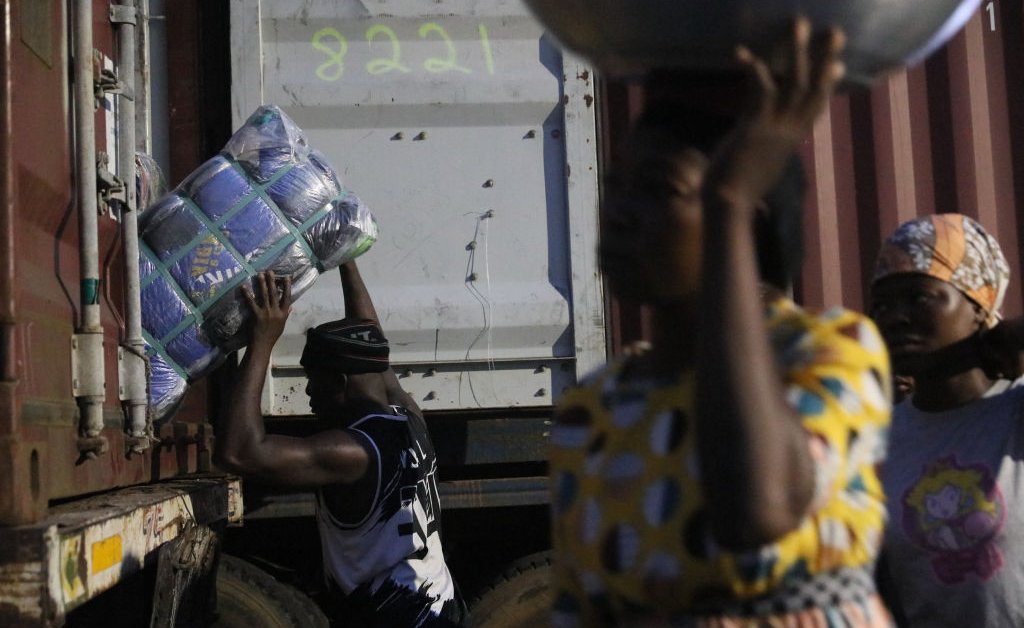Upcycling In Africa: Tackling The Fast Fashion Dumping Ground Crisis

Welcome to your ultimate source for breaking news, trending updates, and in-depth stories from around the world. Whether it's politics, technology, entertainment, sports, or lifestyle, we bring you real-time updates that keep you informed and ahead of the curve.
Our team works tirelessly to ensure you never miss a moment. From the latest developments in global events to the most talked-about topics on social media, our news platform is designed to deliver accurate and timely information, all in one place.
Stay in the know and join thousands of readers who trust us for reliable, up-to-date content. Explore our expertly curated articles and dive deeper into the stories that matter to you. Visit Best Website now and be part of the conversation. Don't miss out on the headlines that shape our world!
Table of Contents
Upcycling in Africa: Tackling the Fast Fashion Dumping Ground Crisis
Africa is facing a growing crisis: a deluge of unwanted clothing from wealthy nations, overwhelming local markets and harming the environment. Millions of tons of used clothing, often of poor quality and unsuitable for the climate, are shipped to the continent annually, stifling local textile industries and creating massive waste problems. But amidst this challenge, a powerful movement is emerging: upcycling. Innovative entrepreneurs and communities are transforming discarded garments into new, valuable products, turning a crisis into an opportunity.
The Dark Side of Second-Hand Clothing
The term "second-hand clothing" often masks a harsh reality. Much of the clothing exported to Africa isn't gently used; it's often damaged, unsuitable, or simply unwanted fast fashion. This influx:
- Undermines local textile industries: Local producers struggle to compete with the incredibly low prices of imported used clothing, leading to job losses and economic hardship.
- Creates environmental problems: Mountains of discarded clothing pollute landfills, leaching harmful chemicals into the soil and water. The lack of proper waste management infrastructure exacerbates the issue.
- Impacts cultural identity: The dominance of Western styles threatens traditional African clothing and craftsmanship.
This isn't simply a problem of supply and demand; it's a complex issue rooted in unsustainable consumption patterns in developed countries and a lack of fair trade practices.
Upcycling: A Sustainable Solution
However, the tide is turning. Across Africa, resourceful individuals and businesses are finding creative ways to upcycle this unwanted clothing, transforming waste into wealth. This involves:
- Transforming old clothes into new garments: Skilled tailors and designers are repurposing fabrics into stylish and modern clothing, bags, and accessories. This not only reduces waste but also creates unique, high-quality products.
- Creating home décor and crafts: Used clothing is being transformed into rugs, quilts, and other home décor items, adding value and creating opportunities for artisans.
- Developing innovative materials: Some entrepreneurs are experimenting with turning textile waste into insulation materials, creating a circular economy model.
These initiatives are not only environmentally sound but also economically empowering, creating jobs and generating income within local communities.
Examples of Upcycling Success Stories
Numerous inspiring projects demonstrate the potential of upcycling in Africa. [Insert link to a relevant case study or article here – e.g., a specific African upcycling business]. These initiatives highlight the ingenuity and entrepreneurial spirit thriving in the face of adversity. [Insert link to another example here – e.g., a non-profit supporting upcycling projects].
The Road Ahead
While upcycling offers a powerful solution, challenges remain. Access to funding, training, and technology are crucial for scaling these initiatives. Furthermore, promoting ethical and sustainable consumption patterns in developed countries is vital to reducing the flow of unwanted clothing to Africa in the first place. This requires a collaborative effort involving governments, NGOs, businesses, and consumers.
The future of fashion in Africa may well depend on embracing upcycling – transforming a crisis into a catalyst for economic growth, environmental sustainability, and cultural preservation. By supporting these initiatives and demanding more responsible consumption habits, we can help build a more equitable and sustainable future for the African continent.
Call to Action: Learn more about supporting African upcycling initiatives and reducing your own fast fashion consumption. [Insert link to a relevant resource here – e.g., a fair trade organization or an upcycling advocacy group].

Thank you for visiting our website, your trusted source for the latest updates and in-depth coverage on Upcycling In Africa: Tackling The Fast Fashion Dumping Ground Crisis. We're committed to keeping you informed with timely and accurate information to meet your curiosity and needs.
If you have any questions, suggestions, or feedback, we'd love to hear from you. Your insights are valuable to us and help us improve to serve you better. Feel free to reach out through our contact page.
Don't forget to bookmark our website and check back regularly for the latest headlines and trending topics. See you next time, and thank you for being part of our growing community!
Featured Posts
-
 Dont Ignore These 10 Critical Symptoms An Er Doctors Advice
Aug 08, 2025
Dont Ignore These 10 Critical Symptoms An Er Doctors Advice
Aug 08, 2025 -
 Fans Rejoice Special Nj Transit Service For Jonas Brothers Concert
Aug 08, 2025
Fans Rejoice Special Nj Transit Service For Jonas Brothers Concert
Aug 08, 2025 -
 Report Jason Sudeikis To Reprise Ted Lasso Role In Season 4 For Unprecedented Salary
Aug 08, 2025
Report Jason Sudeikis To Reprise Ted Lasso Role In Season 4 For Unprecedented Salary
Aug 08, 2025 -
 Staying Healthy During The School Year Practical Advice For Students
Aug 08, 2025
Staying Healthy During The School Year Practical Advice For Students
Aug 08, 2025 -
 Nj Transit Launches Jonas Brothers Shuttle For Met Life Show
Aug 08, 2025
Nj Transit Launches Jonas Brothers Shuttle For Met Life Show
Aug 08, 2025
Latest Posts
-
 Navigating Conversations With Anxiety Understanding Triggering Language And Offering Support
Aug 08, 2025
Navigating Conversations With Anxiety Understanding Triggering Language And Offering Support
Aug 08, 2025 -
 No Evidence Of Thimerosal Harm Yet Rfk Jr Supports Thimerosal Free Vaccines
Aug 08, 2025
No Evidence Of Thimerosal Harm Yet Rfk Jr Supports Thimerosal Free Vaccines
Aug 08, 2025 -
 Dont Delay 10 Warning Signs Requiring Emergency Room Care
Aug 08, 2025
Dont Delay 10 Warning Signs Requiring Emergency Room Care
Aug 08, 2025 -
 Marche Des Transferts Wnba Les Equipes Se Preparent Pour La Saison
Aug 08, 2025
Marche Des Transferts Wnba Les Equipes Se Preparent Pour La Saison
Aug 08, 2025 -
 Selena Gomez S Candid Mental Health Conversation With Benny Blanco On Therapuss
Aug 08, 2025
Selena Gomez S Candid Mental Health Conversation With Benny Blanco On Therapuss
Aug 08, 2025
